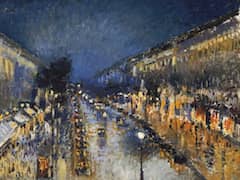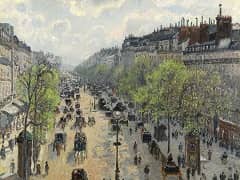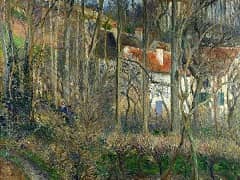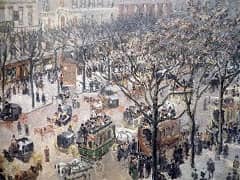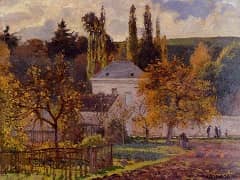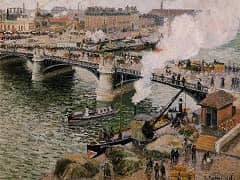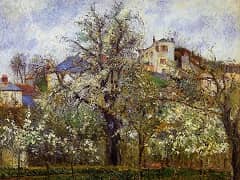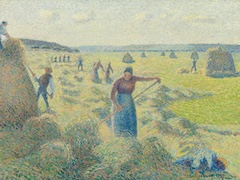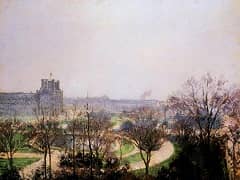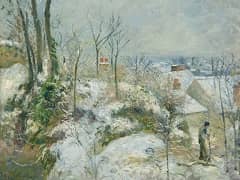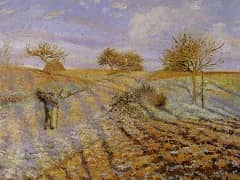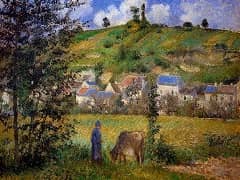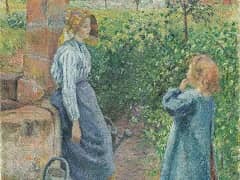The Shepherdess, 1881 by Camille Pissarro
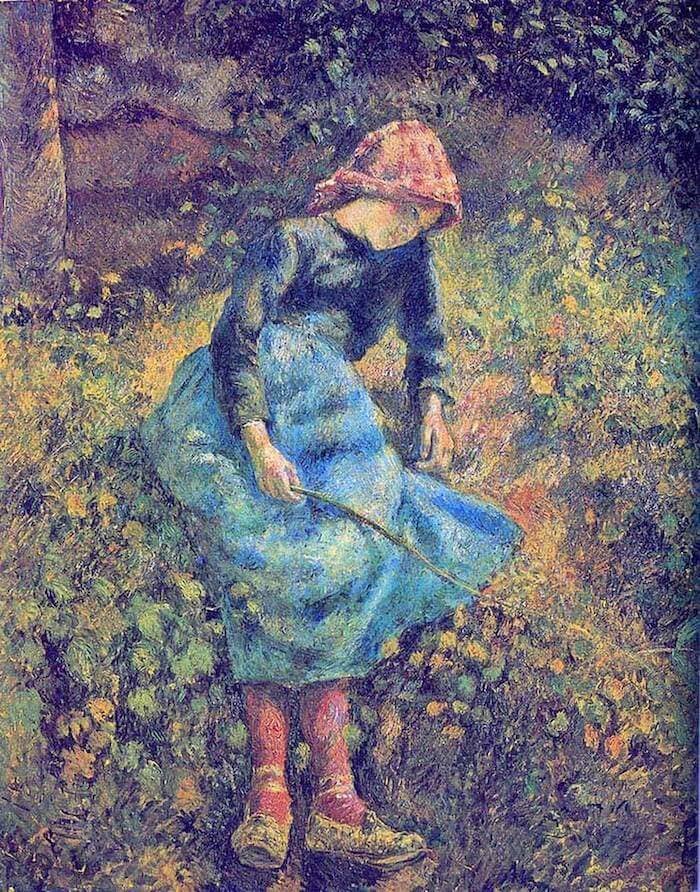
Like other members of the Impressionist group, Pissarro, by the end of the 1870s, had become dissatisfied with his work and sought to introduce a more structured method to his painting. Perhaps in an effort to simplify the content of his compositions, he turned from the spatial problems inherent in landscape painting to portrait-like representations of peasant girls. These figures were usually set in an enclosed space, often against a backdrop of stylized foliage like that in The Shepherdess. During the early 1880s Pissarro concentrated on this theme, depicting peasants - mostly girls - talking, eating, working the land or, as in the case of The Shepherdess, just thinking. Although to the modern eye these peasant portraits appear more idealized and therefore more romantic than his work to date, at the time they were regarded as showing life at its most base.
Even in his earliest drawings, Pissarro showed a fascination for the everyday dreary drudge of peasant life. He loved the clamour of the market place and the dockside, drawing and painting the black cargo handlers in St Thomas and later the Indians in Caracas. In the countryside outside Paris, he found other, less picturesque, peasant tasks worthy of his attention - such as women digging, weeding or washing dishes. It is not surprising that he found his ideas in tune with Anarchist ideology which upheld the work of the peasant - in harmony with nature and shared by others - as the ideal.
In his peasant girl paintings, Pissarro concentrates on the facial features and the detailing of the clothing, focusing on the character of the person. The Shepherdess is a simple country girl, idling on a shady bank, but there is more to her than this: she is young and pretty and is shown in a wistful, rather sad mood. Some would say she was reflecting on the misery of her lot but Pissarro, with typical bourgeois misconception, would have seen her life as ideal. Pissarro's work of this time is often compared with that of Vincent van Gogh. But although Van Gogh also studied peasants at work, his paintings commenting on their plight, he did not have the same approach to realism as Pissarro, who saw the peasants as people rather than as symptoms of a social malady. Pissarro's peasant pictures are closer in conception to the figure paintings of Renoir and Degas. Pissarro was working with Degas in his studio in 1879, collaborating on a printing project, and it is possible that Degas' portrait-like studies of dancers at work inspired him, as his own were later to inspire Gauguin.

